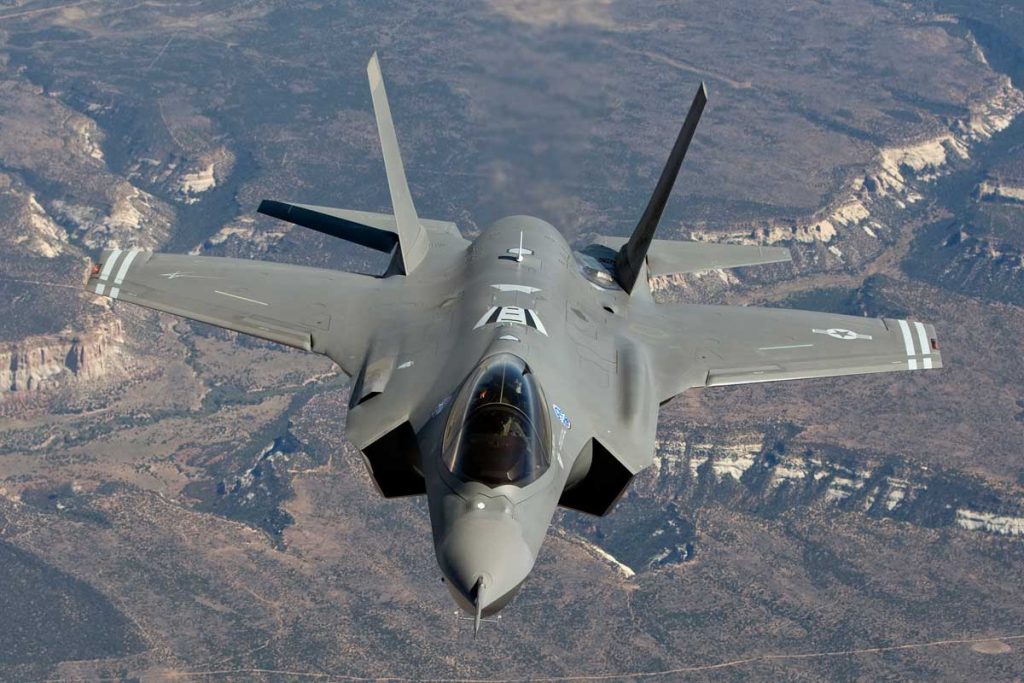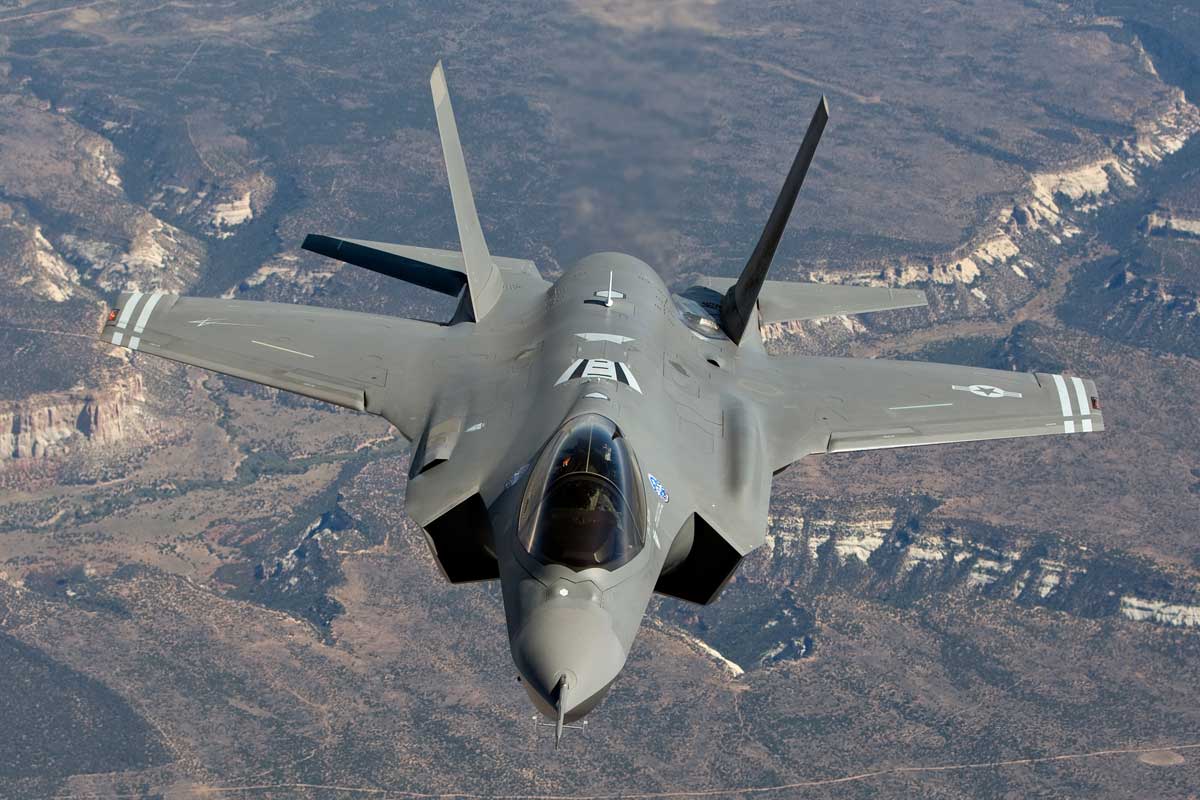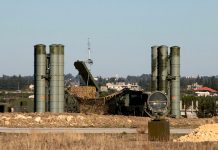
During the U.S. military’s Operation Rough Rider, a Lockheed Martin F-35 Lightning II—among the world’s most advanced stealth fighters—was compelled to perform evasive actions to evade a surface-to-air missile launched by Houthi forces in Yemen. This event occurred amid a bombing campaign that began on March 15, 2025, under President Donald Trump’s administration, marking the first known instance of an F-35 being directly targeted by Houthi air defenses.
A U.S. official, speaking to The War Zone, confirmed the near-miss, explaining that the threat came close enough to force the jet to maneuver evasively. This information, partly supported by earlier New York Times coverage, highlights the unexpectedly capable air defense systems employed by the Houthis and raises concerns about potential weaknesses of even the most sophisticated U.S. military technology in irregular warfare scenarios.
The incident underscores the evolving difficulties faced by U.S. air forces engaged in the Middle East, where Operation Rough Rider—a comprehensive aerial campaign against Houthi-controlled regions—has aimed to degrade the group’s military infrastructure and prevent attacks on regional shipping and Israeli interests. The operation has utilized a variety of U.S. military assets including F-35s, F-16s, and MQ-9 Reaper drones, with the latter suffering substantial losses.
According to The New York Times, Houthi forces successfully shot down seven MQ-9 drones, each valued at roughly $30 million, during the campaign’s initial month, significantly hindering U.S. Central Command’s reconnaissance and precision strike capabilities. The report also indicated that Houthi defenses nearly hit multiple F-16s and an F-35, raising the risk to American pilots.
Although the F-35 was not struck, the incident has brought renewed focus to the tactical and technological challenges posed by the Houthis’ air defense network, which has proven capable of threatening some of the U.S. military’s most advanced aircraft.
The F-35 Lightning II, produced by Lockheed Martin, is a stealth multirole fighter with advanced features such as sensor fusion, electronic warfare suites, and networked operations. It boasts technologies including the AN/APG-81 AESA radar and the Distributed Aperture System, which provides 360-degree missile detection. The aircraft’s electronic warfare system, AN/ASQ-239 Barracuda, helps jam enemy radar and deploy countermeasures like flares and decoys. With a top speed of Mach 1.6 and combat radius exceeding 600 miles, the F-35 remains central to U.S. air power.
The missile that forced the F-35’s evasive response was likely part of a resilient Houthi air defense system, which benefits from Iranian technical support and includes modified Soviet-era missile systems such as the Barq-1 and Barq-2, derived from the 2K12 Kub and 9K37 Buk platforms. These missiles cover ranges up to 70 kilometers and altitudes of 20 kilometers, threatening low-flying aircraft. The Houthis have also deployed the Saqr missile, an infrared-guided loitering weapon posing unique challenges to conventional countermeasures.
Houthi radar systems, including Russian-made P-18 and Iranian Meraj-4 models, provide targeting information, though they lack the sophistication of advanced systems like Russia’s S-400. Nonetheless, their cost-effectiveness and adaptability have enabled effective strikes against valuable targets.
The Houthis’ ability to down multiple MQ-9 drones—vehicles with limited stealth and operating at medium altitudes—demonstrates their skill in combining radar, missile technology, and guerrilla tactics to exploit weaknesses in U.S. air operations.
The F-35 pilot’s evasive maneuvers showcased both pilot skill and the jet’s technological strengths. Upon missile detection, pilots typically perform high-G turns, abrupt altitude changes, and spirals to break missile locks. The F-35’s Distributed Aperture System likely detected the missile’s heat signature early, while its Barracuda suite may have deployed electronic countermeasures such as flares or jamming signals. Techniques like “beaming” (flying perpendicular to the radar source) and “notching” (using terrain to mask the aircraft) help evade radar-guided missiles, while flares and unpredictable flight paths counter infrared-guided threats like the Saqr.
Though the F-35 lacks the extreme agility of aircraft like the F-16, its advanced sensor and electronic warfare systems provide a crucial advantage. This incident highlights the importance of pilot training alongside cutting-edge technology in surviving missile threats.
Since mid-March, Operation Rough Rider has seen U.S. forces strike over 1,000 Houthi targets, including command centers, weapons depots, and air defense installations. Despite these strikes, which have killed many fighters and leaders, the Houthis have continued launching ballistic missiles and drones, including a May 4, 2025, attack near Israel’s Ben Gurion Airport, prompting Israeli retaliatory strikes.
The campaign, costing more than $1 billion and expending thousands of munitions, has yet to decisively degrade Houthi capabilities, which remain able to project power beyond Yemen. The loss of two F/A-18 Super Hornets from the USS Harry S. Truman—one during evasive action against Houthi fire—further illustrates the challenges posed by the group’s air defenses.
Historically, advanced aircraft have been vulnerable to ground-based missile systems. For example, a U.S. F-117 stealth fighter was shot down in 1999 over Serbia by an upgraded Soviet missile system, highlighting the limitations of early stealth technology. Similarly, the current Houthi threat echoes earlier conflicts like the Vietnam War, where Soviet SA-2 missiles forced new U.S. tactics.
While the F-35’s survival in Yemen reflects advances in stealth and electronic warfare, the incident serves as a reminder that no aircraft is invincible. Compared to peers like Russia’s Su-57 or China’s J-20, the F-35’s edge lies in its sensor fusion and networked warfare abilities, but even these advantages can be challenged by resourceful, low-tech opponents.
The Houthi air defense network operates on a much smaller scale than high-end systems like Russia’s S-400 or China’s HQ-9, both of which feature longer ranges and more sophisticated radar and missile technologies. Still, the Houthis compensate through mobility, integration of drones and missiles, and tactics that exploit vulnerabilities in U.S. operations.
This incident also raises questions about the resilience of U.S. unmanned systems like the MQ-9 and the need for future platforms to incorporate stealth and advanced electronic defenses. With the F-35 program’s cost exceeding $428 billion, the effectiveness and cost-efficiency of relying on expensive manned aircraft against irregular foes come under scrutiny.
The Pentagon is exploring next-generation concepts, such as the Next Generation Air Dominance (NGAD) program, which aims to merge manned and unmanned systems to counter sophisticated air defenses. The encounter with Houthi missile threats may accelerate such developments and prompt new strategies for projecting air power in contested zones.
Though public attention to the event has been limited, defense analysts have voiced concerns about the growing sophistication of Houthi air defenses. Joseph Trevithick of The War Zone noted the group’s evolving mix of legacy equipment and innovative tactics has become a notable challenge to U.S. air superiority.
No formal Pentagon statements have detailed the F-35 near-miss, but the overall difficulties faced during Operation Rough Rider have sparked debate over the viability of sustained air campaigns against entrenched, adaptive adversaries. The ceasefire brokered by Oman in early May 2025 has paused strikes, yet ongoing Houthi attacks on Israel suggest the conflict remains unresolved.
Technologically, the F-35’s close call exemplifies the ongoing contest between offensive and defensive capabilities in modern warfare. While the aircraft’s design ensured its survival, the fact it was targeted highlights that even top-tier stealth fighters are not immune to ground-based missile threats.
The Houthis, using a blend of modified older systems and guerrilla tactics, demonstrate how irregular forces can effectively challenge even the most powerful military technologies. This incident stands as a warning that the spread of advanced air defenses—even to non-state actors—requires constant innovation and adaptation by conventional forces.
As the U.S. military plans for future conflicts, the lessons from Yemen are likely to influence the development of new countermeasures and combat tactics designed to face low-tech but highly adaptive opponents. The F-35’s close encounter raises an open question: if the Houthis can threaten one of the world’s most advanced jets, what challenges might arise when confronting even more sophisticated adversaries?
Ultimately, this situation underscores the ongoing balance between technological dominance and the ingenuity of those opposing it—a dynamic that will shape the future of aerial warfare.





